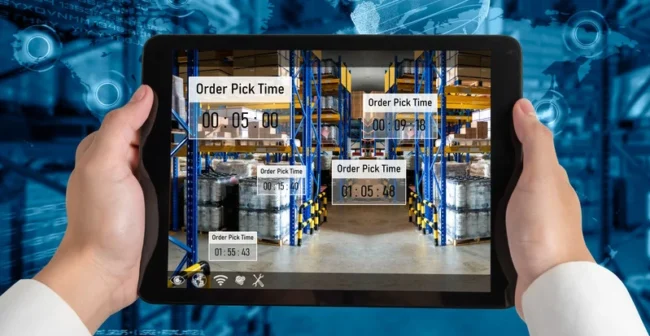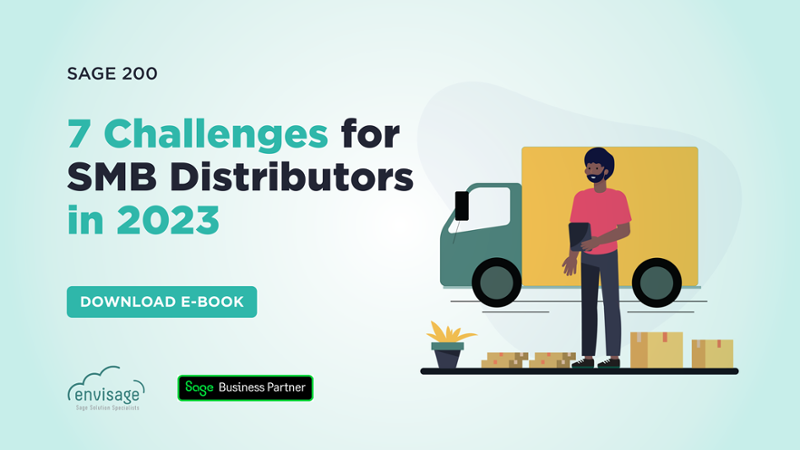
- Barcoding & Warehouse Management, Sage 200, Sage 200 Distribution, Wholesale Distribution
As an Award-Winning Sage Partner and expert in the field of distribution, we thought we’d share our thoughts on the cash/stock dilemma, which is something that many warehouse and distribution businesses struggle with, and this is often because they don’t have the right software to manage all the requirements they have. Critically, it’s about the left hand knowing what the right hand is doing. It’s about keeping all departments in tune with each other, so that the warning signs appear before reaching full impact.
We’ve summarized 7 considerations for this cash/stock dilemma below. If you’d like to read more on this topic, why not download our Cash Stock Dilemma e-book and learn more about how Sage 200 can help address these critical challenges?
1. Inventory Levels and Forecasting
Balancing stock levels can be tricky. On the one hand, overstocking means you’ll be tying up cash in stock that doesn’t turn quickly and it can prevent you from investing this cash elsewhere. On the other hand, understocking means you may lose business due to insufficient stock levels and miss out on future orders due to customers going elsewhere. Understocking can result in you having to pay higher prices to source from an alternative supplier to fulfil orders too.
2. Courier Tracking
When distributors don’t have all the dots joined up with their couriers, it can lead to time-consuming, messy and inefficient processes. It also makes it more difficult to keep customers up-to-date with expected delivery information which can result in dissatisfaction and cause customers to take their business elsewhere, impacting your bottom line. The last mile delivery optimisation is crucial and the more integrated your courier process is, the more efficient your operation will be with a noticeable reduction in customer queries regarding delivery times and dates.
3. Pre-Allocations and Prioritisation
Many distributors will create purchase orders and then when the stock comes in, their system will allocate items based on the sales order date. However, this isn’t always the most efficient way to do things and it can cause problems. Getting this bit right and having a pre-allocation system in place can help keep your bottom line healthy.
4. Container Management
The uncertainty that comes from not being able to track containers, compare provisional dates with actual dates and automatically update all purchase orders, will have a direct impact on the customer experience.
5. Procurement
From our experience, many distribution organisations operate ad-hoc/semi-automated procurement processes. For example, items can be purchased without proper item codes (e.g. miscellaneous), goods can come in be placed in the wrong location such as an aisle, shelf, bin or even warehouse, and inspections that should be carried out systematically can be somewhat hit-and-miss. Purchase authorisation rules can often be loose or sometimes even too rigid and cumbersome resulting in productivity losses. Continuing to operate like this can result in many problems.
As procurement is a critical piece of the of the distribution/supply chain puzzle, it’s important that this it’s managed correctly.
6. Sales Orders
Similar to the procurement process, managing the sales order process is critical. The secret is having a process that is both seamless and efficient, where the sales/administrative operative has all the relevant information right in front of them. Mistakes made at the sales order entry stage will be carried through to procurement, despatch, finance and customer service, so a reduction in errors will have a positive impact on the bottom line.
It’s about having access to the right data at the right time. Simple things like accessing historical orders, copy lines, view back orders etc, can cut down on unproductive time and will reduce the margin for error.
7. Warehouse Management
The right software can make it easy for warehouse managers to manage everything from picking and despatching orders to writing off damaged stock and transferring stock in the warehouse. The tools available to them will make their day-to-day responsibilities much easier and they can ensure that nothing important is being overlooked. Having fully integrated processes and access to real-time stock updates can enable quicker and more accurate stock picking, resulting in fewer returns, as well as quicker and more accurate stock receipting, resulting in better stock accuracy.
The right system to fit your distribution business
We’d love to share our guide with you where we explore Sage 200 features and how it can benefit your business.
On June 19th, we will host a webinar “Paving the way for growth with Sage Software”.
The following topics will be discussed:
• Accounting Software Evolution
• AI and Future Trends In The Market
• Challenges Facing Small-Mid Businesses
• The Positive Impact of Sage Software
• Choosing The Right Solution For Your Business
See link to register: https://envisagecloud.ie/paving-the-way-for-growth-sage-software-webinar/
About the Author

Ivan Darmody
Ivan is a customer-centric self-starter with a passion for technology. With extensive sales experience in various industries, he has focused on problem-solving customers’ requirements and providing the best solutions to streamline their processes while maximising potential utilising both direct and indirect sales channels.





